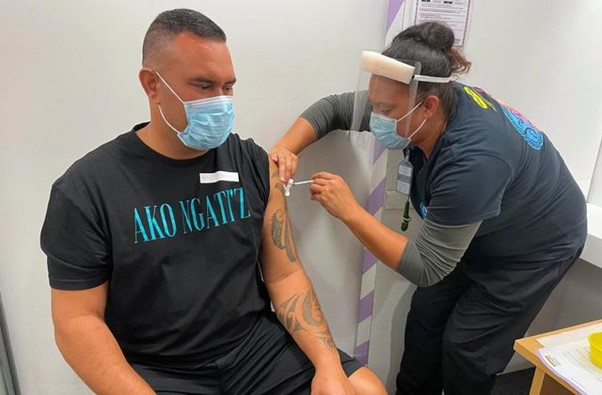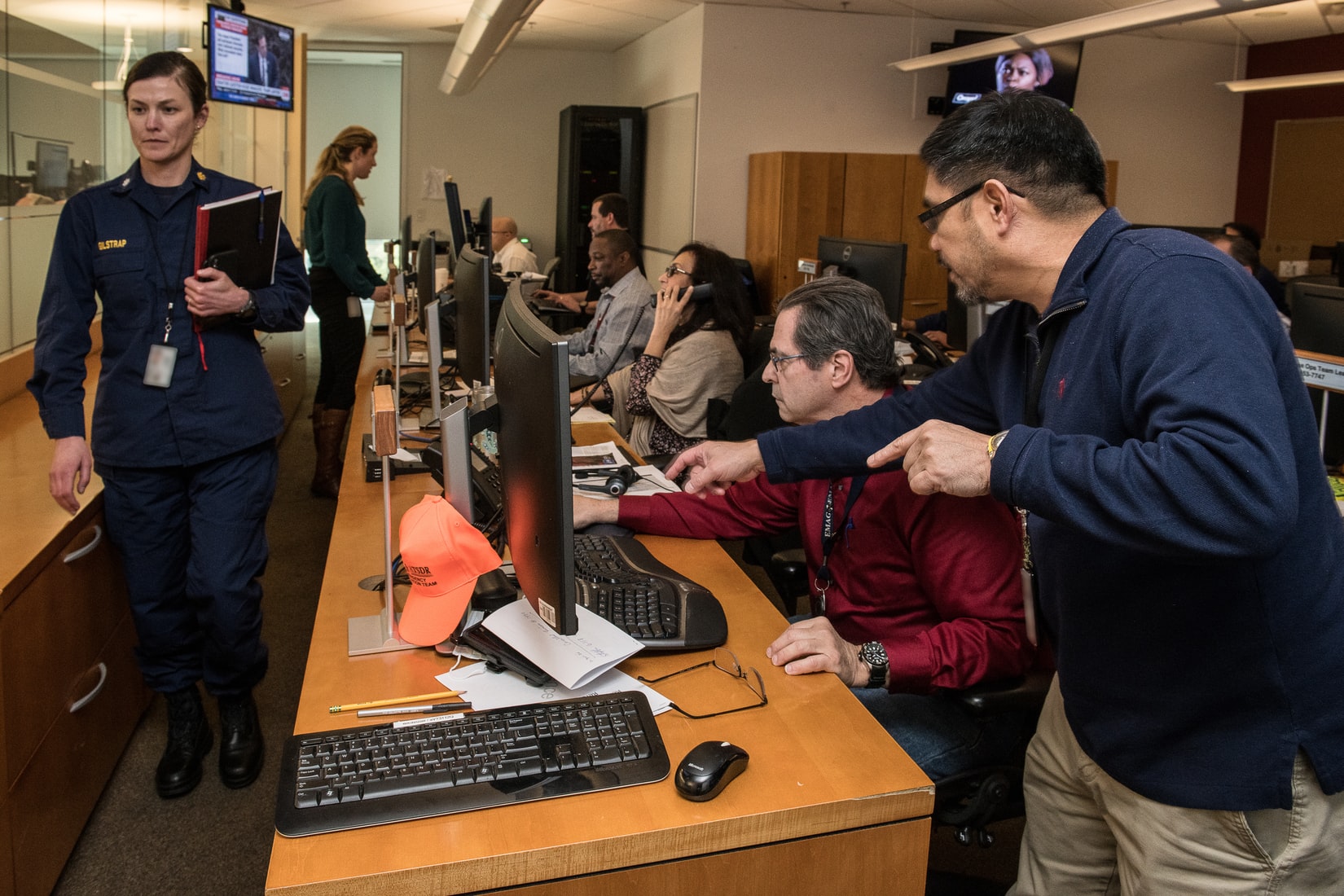Health & Safety
A Comprehensive Guide: Identifying and Addressing Workplace Stressors
In today’s workplace, you can’t just focus on physical hazards. Psychosocial hazards like work stress, conflicts, harassment and traumatic incidents must also be considered. Mental wellbeing not just physical wellbeing of staff has to be the goal of a supportive workplace.
At the Policy Place, we reflect this focus for members of our online policy service throughout our health and safety policy suite. But policy isn’t enough. Within any organisation or business the first important step to prevent mental harm and injury is to identify psychosocial hazards.
To help with this, we’ve prepared the following Action Plan that is based on the Model of Practice for Managing psychosocial hazards at Work produced by Safe Work Australia. Follow the steps in it and you’ll be able to identify key hazards in your workplace warranting management via your health and safety policy and procedures.
With this information, you’ll then be able to work with your staff to assess and mitigate risks like burnout, high turnover, and psychological harm and achieve a supportive work environment where both morale and productivity are high.
Action Plan: Identifying and Addressing Workplace Stressors
1. Conduct Comprehensive Hazard Identification 🔍
Identify all reasonably foreseeable psychosocial hazards within your business or community service.
2. Recognize Cultural Hazards:
🌐 Consider cultural factors that may contribute to psychosocial hazards, such as organisational norms, cultural diversity, values, messaging and communication styles.
3. Consultation with Workers: 🤝
Engage workers in the hazard identification process, including Health and Safety Representatives (HSRs) if applicable.
4. Use Surveys and Tools:
📊 Employ surveys to gather information from staff, HSRs, supervisors, and members of the management team.
4. Observe Work and Behaviors:
👀 Observe the workplace environment, work practices, and interpersonal interactions.
5. Review Available Information:
📋 Review records of injuries, incidents, complaints, workplace inspections, staffing decisions, notes from exit interviews, absenteeism, policies, and more.
6. Identify Trends:
📈 Analyse collected information to identify trends in hazard occurrence (eg retention versus attrition in areas; absenteeism).
7. Establish Reporting Mechanism:
📝 Establish and promote ways for workers to report hazards, ensuring privacy and anonymity where possible.
8. Encourage Reporting:
📣 Address common reasons for underreporting and encourage workers to report hazards through various accessible channels.
9. Act on Reported Hazards:
⚠️ Take reported hazards seriously and implement appropriate control measures.
10. Adapt Reporting Systems Proportionally:
🔄 Tailor reporting systems to the organization’s size and risk profile.
National Adverse Event Policy Commences
The new National Adverse Event Policy commences for Aotearoa/New Zealand on 1 July 2023. It improves on the old one.
Restoration in the National Adverse Event policy?
Key elements of the restorative approach
1. Communication and Support
The National Adverse Event policy highlights the importance of effective communication and support for patients, their families/whānau, and healthcare professionals involved in adverse events. Open and honest communication is crucial to addressing the harm caused and to keeping people informed.
Appropriate and timely support and care is also crucial to assist people to cope with the aftermath of an adverse event. Planning for care is important and may include specialist and community referrals.
2. Learning and Improvement
The restorative approach emphasises the importance of learning from adverse events to prevent their recurrence. Healthcare agencies must review and investigate an event to uncover why and how it occurred and to plan and implement necessary changes to prevent similar incidents in the future. This focus on learning and improvement helps restore trust in the healthcare system by demonstrating a commitment to addressing and preventing harm.
3. Redress and Remedies
Restorative measures aim to redress harm and restore wellbeing. Redress can take many forms. It will depend on the legislative and regulatory framework, the wishes of the person harmed and the nature and circumstances of the harm. An agency’s acknowledgement of harm may be sufficient. An apology for harm and its impacts can mean a lot. Or it may be necessary to arrange for compensation (ACC) and resourcing for ongoing care.
4. Cultural Considerations
The restorative approach recognises that cultural considerations are relevant to how healthcare professionals should engage with people impacted by an adverse event. Māori principles of restorative justice, such as manaakitanga (hospitality), whakawhanaungatanga (building relationships), and whakamana (empowerment) are important.
Conclusion
In Aotearoa/New Zealand, we’ve seen the restorative approach in action in a range of contexts, for example, in the Youth Justice System and criminal sentencing. It has been proven to have many benefits. As a key element of the new National Adverse Event Policy – it will foster a culture of accountability, trust, and learning within the healthcare system.
Check out Te Tāhū Hauora/HQSC website for all the resources it provides to support the implementation of the National policy.
Your workplace vaccination policy and procedure
You might think it’s easy when it comes to requiring staff to get vaccinated. They should be given the choice – jab or job, right?
Wrong. It’s not so simple at all, especially when it comes to vaccinations for existing staff in frontline positions eg health and social service staff.
It’s a balancing act

There’s some important interests like human rights and public health to think about and balance:
- the right to refuse and give informed consent to medical treatment under the NZ Bill of Rights Act 1990 (sections 10&11); Code of Health and Disability Rights (sections 6 & 7)
- an employer’s obligation to take all due care to provide a safe and healthy workplace
- a worker’s obligation to take reasonable care to avoid causing harm to themselves and others
- the duty on an agency to take reasonable care to avoid causing foreseeable harm to clients, consumers etc.
And, amongst this, community levels of COVID-19 are also relevant and must be considered.
A positive work culture
Good faith and relationships in the workplace are also important to consider. Public debate too easily descends into blaming and name-calling.
You want to avoid to the greatest extent possible division and friction in the workplace about vaccination. The world is divided enough and a positive work culture is integral to retaining staff and achieving good results.
What to cover in your vaccination policy and procedure
See here for our Key Tips for your Workplace Vaccination policy and procedure.
Policy Intent
Another key tip is to be upfront with your policy intent. If you want to encourage vaccination state it, state it at the front or start of your policy. For example, that –
” the organisation supports kaimahi/staff to obtain vaccination as an important way to mitigate risks of infection of COVID 19.”
Likewise, if you’re worried about workplace divide and impact on culture, include it in your intent. As we suggested in Key Tips for your Workplace Vaccination policy and procedure, an important way to show good faith is to get staff input to the development and review of the policy and procedure.
Warning
Warning, ensure your policy requirements are consistent with your intent. If you’re only wanting to encourage vaccination, then stick to that. Don’t venture into mandating vaccination.
Any requirement for vaccination must be justifiable given the risks of a job and an assessment that vaccination as opposed to others measures is the best and safest way of managing those risks. You can’t require vaccination as a way of encouraging it.
Risk assessment
In How your policy and procedure can bridge the vaccination divide we gave some ideas to head off division and disharmony in the workplace in relation to vaccination. A key strategy is to be rational about it.
Your policy and procedure should reflect an objective risk assessment of roles in your workforce. This risk assessment will help justify why vaccination is a requirement for some positions. It will also help you identify roles where vaccination may not be necessary.
Information and support
Where reasonably practicable, support staff to get vaccinated eg time off for them and their dependents to get vaccinated and to recover if there are any after-effects; referral to public health information about vaccination.
Be an open book when it comes to information. Make sure staff are informed about all the issues relating to Covid-19, vaccination and how it’s relevant to their work and whānau.
For staff who are seem more hesitant about vaccination, engage with them in good faith and support them to address their concerns and questions. An in-person or at least one-to-one engagement with the kaimahi/staff member (with the option to invite their whānau) is likely to be most effective.
Check out Key Tips for your Workplace Vaccination policy and procedure for some more ideas about how to support vaccination.
Prove it

Don’t forget to require proof of vaccination in your policy and procedure. Testing regimes have shown the danger of relying on self-reports.
Require the evidence to be kept on file. You are likely to need it if vaccinations are going to be required on a regular or annual basis to be effective.
Address the challenge
Your policy should include a process for kaimahi/staff, who are unable to be vaccinated because of a pre-existing health condition, and for those who refuse vaccination.
You don’t want these staff to hide they are not vaccinated and the risks this brings. So outlining the process and addressing fears like dismissal is important.
Incorporating your Good faith in Employment policy and procedure will be important. The process could involve steps like the following:
- assessment and application of other protections to the relevant staff (eg PPE, masks) for the person to continue in their role in light of the assessed risks (above)
- an agreed change of duties or position where there is less risk
- through to resignation and termination (if unable to adequately address safety risks.)
Get ready
Good news – if you’re a member of our online policy and procedure service, we’ve already got you covered.
If you’re not a member, now’s the time to start on your DIY workplace vaccination policy and procedure. Check out our posts on vaccination and DIY policy and procedure for help.
How your policy and procedure can bridge the vaccination divide
Covid-19 vaccination is going to be the light at the end of the long pandemic tunnel. In Aotearoa/New Zealand we now have a guide about when we are likely to enter the light.
But is it the light? As vaccinations start to roll out, there’s more public debate about the consequences of not getting vaccinated.
Big issues to resolve
Are we now going to be divided by regulations for vaccinated and non-vaccinated people? What about the ethical and social issues involved?
It’s not looking pretty if we’re facing a future of sanctioned “haves” and “have nots”. Yet, a future with more illness and deaths from Covid-19 and the consequent need for more controls and restrictions in the workplace and other areas looks equally dire.
There’s a lot of issues to resolve. Public discussion about social and legal regulation associated with Covid-19 vaccinations is likely to therefore continue for some time.
Workplace issues
Meantime, it’s important that NZ workplaces continue to use pandemic controls. Social distancing and hygiene practices should be adhered to regardless of vaccination status.
It’s also important that workplaces involved in frontline delivery of health and social services get their policies and procedures on vaccination sorted. Last time, we posted some suggestions for what should be covered in your workplace vaccination policy and procedure.
Today, given the prospect of social divides around vaccination, we suggest that another big challenge for your policy and procedure is to address the risks of division and acrimony in the workplace around vaccinations.
Tips
Our 3 tips for your workplace vaccination policy are to:
- take a risk-based approach so that any requirements for vaccination will be justified by reference to likely health effects
- support kaimahi/staff to make their decisions on an informed basis
- communicate with kaimahi/staff from beginning to end about the policy. Be open to feedback and to the possibility of making adjustments and changes as you go along.
There’s enough division in the world already. Workplaces have often been a microcosm of social divides. We need to learn from past mistakes, not repeat them.
So be deliberative with your workplace policy. Yes, prioritise the safety of staff and clients. But don’t forget how important our relationships, social cohesion, and respect for rights are.
Have fun
It’s always a challenge to get the balance right with policies and procedures. But that’s the fun factor of doing policy work for us at the Policy Place (yes we are policy geeks.)
If policy isn’t your thing but you need your workplace vaccination policy done or need all your policies and procedures reviewed and updated, contact us. Choose to be free to focus on what you do best and love and to let us do your policies and procedures.
Key tips for your workplace vaccination policy and procedure
With vaccinations for Covid-19 becoming available, what’s going to be your agency position on it? Do you even need a position?
Important questions, particularly, if you’re a social and health service providing direct care services.
If you think you need an agency position on Covid-19 vaccinations, then it’s time to get cracking on your policy and procedure.
The big issues
There are some important considerations for your policy and procedure including:
- your health and safety duties as an employer or worker
- that a person can’t generally be compelled to have medical treatment
- the right to give informed consent
- likely consequences of exposure given the characteristics of staff in the role
- it is unlawful to discriminate against a person based on disability or health status subject to limited exceptions.
Nuts and bolts
At the Policy Place, we work with social, health, and education agencies to provide online policies and procedures and bespoke policies. We can help you with your vaccination and other policies.
But if you’re into DIY, here are some key questions to think about when developing your policy and procedure on Covid 19 vaccinations for your existing workforce.
Are there any roles for which vaccination is necessary?
In other words, are there roles that, if not vaccinated, would place staff, clients, and others at unacceptable risk? Some things to think about are:
- the extent of exposure to Covid-19 in the role
- the vulnerability of persons you are dealing with
- whether other measures can be implemented to deal with risks (eg masks, physical distancing)
- what difference community context might make eg high rates of community transmission versus lower rates and how your policy and procedure should respond.
What provision should be made for staff who, because of a pre-existing health condition, can’t get vaccinated?
Staff in this position are likely to have some good ideas. These could include:
- taking extra precautions for them to remain with their current duties?
- altering their duties to reduce risk of exposure
- moving the staff to roles less exposed to risk.
What should be the response for staff vulnerable to severe symptoms of Covid 19?
The health and safety duty for an employing agency requires reasonable steps to prevent harm. If staff have known conditions (including family members who are vulnerable) then reasonable steps must be responsive to the relevant condition.
Participation and input from the affected staff about their needs and measures to keep them safe until vaccination will be an important part of your policy and procedure.
If you’ve already had vulnerable staff, then you’ve got the benefit of hindsight. Your policy and procedure can provide for current measures to continue or, can address what hasn’t worked. It may be necessary to provide temporary measures like opportunities for remote work and extra safety measures for the staff concerned.
How can you encourage and support staff to get vaccinated?
If you’re a health or social service providing direct services, your policy and procedure can encourage staff to receive vaccinations with measures like:
- time off to receive the vaccination
- arrangements to access information about the vaccination from independent and trusted sources
- information about the consequences of choosing not to be vaccinated on their role/duties.
So if vaccination is going to important in your workplace, it’s time to get started on your policy and procedure.
Contact us NOW if you want help with your policies and procedures.
Choose our online policy and procedure service and rest easy knowing your policies and procedures are being regularly reviewed and updated.
9 policy and procedure areas to cover off for COVID- 19
Good policies and procedures can help you steer the course – keep you on track with your compliance and guard against panicked decision making in a time of emergency.

Are all policies and procedures equally important in a time of emergency?
Not all. Here’s what we prioritise.
Compliance
Policies and procedures addressing compliance with regulations and standards. These are the “must dos”. They can help you decide what and how you might pare back to save money and if need be, make changes to how you operate.
Pandemic policy/plan
An obvious policy.
As indicated by the recent resurgence of COVID-19 in Tamaki Makaurau/Auckland, the plan needs to be robust enough to support flexible and quick responses to changing Alert levels. If your plan is based on a linear trajectory, it should be updated accordingly.
While you’re at it, check that your plan is consistent with the legislated requirements for contact tracing, restrictions on movements and physical distancing.

Staff at risk of infection
The situation of staff in this circumstance can be part of a pandemic or leave policy or because of its high-interest value, as a separate policy. The status of and responses to staff in the following circumstances should be clarified:
- staff exposed to infection through an event or personal contact (ie where increased risk)
- staff concerned about risk (but no indications of exposure)
- staff who may be especially vulnerable to infection because of a pre-existing condition, age etc
- staff are quarantined/required to self-isolate (may differentiate cases where it was forseeable/not forseeable)
- staff returning from international travel
- community lock-down.
Leave policy
Employees’ minimum leave entitlements are addressed in legislation. Organisations will have their own policy and procedure where leave is above the minimum and to outline how leave should be applied for etc.
Leave entitlements are especially important for staff when jobs start looking uncertain. It will also be pressing for staff at risk of infection, staff who become sick and those caring for dependents.
Your leave policy should address the application process for annual leave, sick leave, dependent/caregiver leave (may be added to or part of sick leave) and access to other leave – eg paid special leave; unpaid leave.

Flexible working policy
This policy should cover the relevant legal requirements eg that arrangements are requested and responded to, when formality might be waived and reasons why a request might be declined. It should cover options such as staff working on flexible schedules and in remote locations; recording variations to employment terms, clocking in and out, shared calendars and monitoring and review of arrangements.
Working from home policy
Working from home is a form of remote working. It could be part of your flexible working policy. However, its become a dominant way of working while in the pandemic so we think it warrants specific attention as a policy.
Your policy should cover expectations for how and when work is to be achieved, connection with the mothership (ie workplace and other colleagues), workplace hui; shared calendar and time recording; health and safety; roles and responsibilities. See here for help.

IT, privacy & communications policy
Most organisations will have policies about what’s acceptable/unacceptable use of email, online systems, software and social media. If staff are moving to remote working, it’s important that these policies cover roles and responsibilities, (eg for hardware, authorisations, arranging staff logins), safeguards for the transfer, use and recording of organisational and personal information and log in/access to online organisational resources including client management system and policies and procedures.
Diversity and inclusion
This may seem a surprising “must have” for Covid 19. It reflects the law (eg Human Rights Act; health and disability and social sector accreditation standards.)
We’ve included it here to counter the risks of xenophobia and exclusion. There have been instances of racist attacks related to Covid-19 and more recently, animosity towards returning citizens and residents. Yes, we’re concerned about health and safety. But this can not be at the expense of equality.
We all benefit from inclusive and welcoming work cultures where staff and others who may be infectious are supported and disinformation about the virus is rejected.
Delegations
If you’re a funded social or health service you’re required to have a delegations policy. At least, you should be able to evidence clear parameters around management versus governance functions and powers.
With Covid 19, it may be a good idea to think more extensively about delegations. For business continuity purposes, delegations should be in place and enable sufficient cover for when usual decision-makers are absent or become ill.

Ways you can address these areas
For those who’ve got it all covered, make sure your staff are aware of the policies. Enable their 24/7 access to your policies, procedures and other systems if they start to work remotely.
If you haven’t got them covered, it’s not too late. You can:
- amend your related policies to cover off the key areas
- develop and incorporate new procedures into existing policies
- contact us for help so it’s one less worry and there’s less stress.
For those into DIY, check out some of our other posts and these resources for help with drafting your policies:
9 tips to help you prepare for Alert Level 1 & beyond
We’re heading towards Alert level 1 so let’s get our workplaces ready.
We don’t know exactly what’s involved in Level 1 but we do know that we’re going to have to be careful and vigilant about public health. Always.
COVID-19 won’t be our last pandemic. Pandemic readiness must be part of how we prepare for Alert Level 1 and beyond. Here are some tips to help you prepare.
Tip 1: Distancing

Current physical distancing requirements will relax, but if it’s possible maintain workplace measures to support distancing like:
-
more physical spacing between people
-
more online and fewer in-person meetings
-
staggered/rostered work schedules
-
smaller programmes/courses
-
contactless deliveries.
Tip 2: Keep up with the hygiene and cleaning routine

This is just good practice and should continue in the workplace. Maintain signage about coughing/sneezing hygiene and ensure wide access to tissues, soap, sanitiser, masks and other relevant protective gear.
Ensure that shared spaces are thoroughly cleaned each day. If staff take turns with this, develop an agreed checklist of hygiene and cleaning tasks to be achieved.
Tip 3: Contact Tracing
Continue to keep a record of who you are working with and who is entering the workplace. Make sure people understand why and what you’re doing it for.
Contact tracing is important for public health purposes. It’s a key way to track and contain infection outbreaks.
Tip 4: Strengthen remote capability

If you’ve been working remotely, keep it up. It is your back-up plan if there’s another infectious outbreak.
Ensure you’ve got the basics covered:
-
your tech solutions for communication
-
training for staff
-
remote/flexible working arrangements agreed with staff and reflected in their employment agreements
-
your handbook with policies and procedures updated and online for easy access and use by remote staff.
Tip 5: Encourage personal responsibility for health

You need everyone on board – everyone you work with- to stay at home if they are sick.
Communicate this consistently.
Action it by:
-
allowing sick or special leave when staff report minor – serious symptoms of COVID-19
-
allowing staff to work remotely so they can self-isolate whenever they are reasonably concerned about exposure to COVID-19 or are experiencing symptoms.
The costs of these measures will be less than the cost of a future lock down. If you’re worried they will be mis-used, make sure your other policies dealing with conduct, performance expectations and disciplinary action are fit for purpose.
Tip 6: Review and respond

COVID-19 economic impacts are predicted to broaden so keep an eye on what’s happening for those you serve. It may be necessary to re-purpose resourcing or to scale an activity you do up or down to become more responsive and viable in the post-COVID 19 world.
Need help with that? Check out the range of government support available.
Tip 7: Take special care of people-facing and vulnerable staff

Monitor and address risks to:
-
staff with pre-existing conditions like heart disease and diabetes that make them especially vulnerable to COVID 19
-
essential workers and public -facing staff (eg foodbank staff; caregivers; health practitioners; bus & delivery drivers).
In addition to controls like masks and screens, encourage regular testing of your front-facing staff and essential workers for COVID-19 and that they get the flu shot.
Tip 8: Improve business continuity planning

We’re all in this together and stronger for it.
Improve your business continuity planning by making arrangements now with others operating in related areas about sharing resources, staffing and volunteers, obtaining supplies etc during a pandemic outbreak.
Tip 9: Stay on top of public health information

COVID-19 has reminded us we are all in the business of public health.
We need to stay on top of public health data so we can reliably identify hazardous activities and the risks and develop controls in a responsive way. Stay informed and keep your staff and others informed.
How parenting helps you manage workplace health and safety
Parenting is “risky” business. So is managing health and safety in the workplace. Apply what you know as a parent and you’ll be on course to health and safety in the workplace.

Similarities
Risk-management is ordinary
We want our kids to be happy and thrive so we let them take chances, make mistakes. We let them climb the highest tree, take a high skate ramp or bike jump even though “secretly” it may scare us to death.
Healthy risk-taking helps kids become resilient. Also important are caring & supportive relationships, coping skills, encouraging kids to problem-solve and letting them make mistakes to learn. Rather than say no to our kids risk-taking, we prepare them, inform and equip them, support them through the challenges and mishaps.
Risk-taking is also an inevitable part of business. It goes with employing staff; working with people; living with climate change and prospects of natural disasters etc. Preventing and dealing with risks therefore, needs to be BAU in terms of workplace culture, staff and client relationships, policies and procedures and decision-making processes.
Guided by a risk appetite
Sometimes we have to say “no” to our kids’ options for fun. But more often we don’t. Our response depends on our “risk appetite” – the level and nature of risk that we will accept given the likely benefits of the activity (eg can I live with the consequence of torn clothing, damage, a broken bone if the risk eventuates?).
Similarly, as managers, governors and staff, faced with choices that carry risks, we will consider what level and types of risks we can live with and manage. We communicate and engage with staff and others around what risks we’re comfortable with through our policies and procedures, when assessing risks and adequacy of controls.
Fair response
As a parent and as a manager, our response to risk(s) will depend on how severe we think the consequence will be and how likely it is. Our response should be proportionate, reasonable and ideally, particular to the risk(s).
Risk scenarios involving the most severe consequences should be prioritised and receive the most intense response.

Differences
Regulations
Regulations require workplace health and safety to be front and centre for workplaces. The job of a parent is less regulated with laws applying only in specific circumstances (eg riding with a helmet, use of child restraints, criminal offences).
This difference has important consequences. For example, organisations face sanctions if they don’t comply with legal requirements. More positively, a business or organisation can gain from the ready-made guidance provided by regulations.
Disclosure
As parents, we’re not usually obligated to talk to our child(ren) about risks. By contrast, full and transparent disclosure of information about risks is necessary in the workplace. Staff, clients and visitors to the workplace have a right to be fully informed about of risks to their safety and to make decisions about their safety based on that.
Gut versus informed
As a parent, we’ll often act on our “gut” about risks. Sometimes, we might do extra homework to get better informed about the real picture but it’s not required.
A more systematic and thorough approach is however expected of management. A manager must take reasonable steps to keep themselves informed about risks and put effective safety controls in place. Managers should therefore be aware of relevant data from industry and elsewhere about risks and effective safety controls (eg protective equipment; MoH guidelines).
Participation
The extent to which we talk to our children about risks and safety will depend on their age, our parenting style and preferences etc.
As managers, though, the law is clear that we must engage and allow staff to participate in health and safety decision making in the workplace. It makes sense too if we want to ensure that we are over the risks and taking all due care about the health and safety of those in our workforce.
Conclusion
Our health and safety responsibilities can sometimes feel overwhelming. Now, more than ever, health and safety must be front and centre for organisations.
If you’re into DIY policies and procedures, remember you’ve got a lot to practical experience of managing risk to draw on if you’ve been or are a parent.
But if you’re not into DIY and want the convenience and relief of having someone else take care of your agency’s policies and procedures, contact us. Our online policy and procedure service, accessible 24/7, includes health and safety policies that we can customise to you.
Let us look after your policy and procedure needs so you have more time to focus on your work and whānau.
Contact us NOW!
“Upping the Ante” with workplace health & safety
With workplace injury still so prevalent and always a possibility, is there something more we should and can be doing to safeguard the health and wellbeing/hauora of staff?
Mahi/work in the social, community, health and justice sectors is “risky”. Hazards for workers may be physical, environmental, social, psychological and client-related. There are consequent risks to physical, mental and spiritual health and wellbeing for staff and volunteers.
Always review
Questioning and reviewing our health and safety practices is a good starting point. In fact, readiness to question is integral to a good health and safety response.
Hazards and risks are dynamic and change. Checking and reviewing them is a must as is reviewing and checking the efficacy of safety controls.
What about policies and procedures?
Policies and procedures are the bricks and mortar of a positive health and safety culture in the workplace.
Policies should address issues such as:
- health and safety responsibilities (eg who has health and safety officer responsibilities?)
- responses to safety incidents and adverse events
- identification of hazards and management of risks and controls
- prioritising safety responses
- recording of risks and controls (hazard and risk register)
- worksite checks
- bullying and harassment
- training and supervision requirements
- emergency and disaster preparedness
A dynamic response
But policies and procedures are not the whole answer. Risks are not static. They are dynamic and likely to change. This should be allowed for in policies, the way policies are implemented and in the safety measures established to minimise risks.
There must be mechanisms to:
- gather and use data to help identify hazards (eg complaints data, rates of staff absenteeism, weather reports for outdoor activities) and assess and review levels and likelihood of risk
- monitor and keep track of higher risk situations (eg as high complex needs; multi-disciplinary team;
- keep people informed about the risks and respect their right to give/refuse informed consent
- escalate or increase safeguards as needed in order to reduce the level and/or likelihood of risk of harm (eg use of protective gear; re-schedule appointments; cancellation or postponement being monitored.
Case study
A Policy Place subscriber runs group activities for young people. Some of the activities are outside and adventuresome. Before and throughout the adventure activities, the organisation’s policies now provide for:
- data about outside conditions (eg weather) to be closely monitored
- preparedness to respond to escalated risk
- decision-making when risks can’t be adequately managed.
Case study
The staff of a Policy Place subscriber travel a lot to see clients. Sometimes, they are travelling to remote locations. Sometimes they are transporting clients who have histories that indicate risk. We drafted their health and safety policies to comply with the remote work provisions of the Health and Safety at Work Act (General Risk and Workplace Management) Regulations 2016. We also drafted a Transporting clients policy and procedure to provide for risks to be assessed and escalation of safety measures when risk heightens.
Conclusion
The health and safety of everyone in the workplace should always be a priority. Policies and procedures are a good start but we can never be complacent about risk. Question, monitor, check and review risks and adjust and update safety measures regularly. Be safe, stay well!
Learning from the Waitangi Tribunal Māori health report
The first report from the Waitangi Tribunal of its Kaupapa Inquiry into Māori health – Hauora – was released this month. It concluded that our primary health care system has failed to achieve Māori health equity; that New Zealand’s legislative, policy and administrative framework is not, in fact, fit to achieve this outcome.
News reports have highlighted the Tribunal’s findings of institutional racism. Here, we discuss some other aspects of the Tribunal’s report to help agencies give effect to some of the gems in the report (eg in their policies and practices).
We look first at the Tribunal’s approach to the Crown’s 3 Ps Treaty framework. We then look at new Treaty principles proposed by the Tribunal. Later, at some strategies for reflecting these principles.
The “3 Ps” – out with the old
The “3 Ps” comprise the well-established Crown Treaty framework – the principles of partnership, participation and protection. They came out of the Royal Commission on Social Policy in 1986.
The Tribunal described these principles as outdated and the Crown accepted that they reflect a “reductionist view” of the Treaty (Hauora, p79).
Thirty years on, with a lot more Treaty jurisprudence and Treaty settlements under our national belt, there’s clearly room to do better. The Tribunal proposes a new set of Treaty principles for New Zealand’s primary health care framework.
They are principles the Tribunal has relied on in a number of key reports (eg Te Whānau o Waipereira Report; The Napier Hospital and Health Services Report; Tū Mai Te Rangi! Report on the Crown and Disproportionate Reoffending Rates.) They are relevant to all sectors. We briefly outline them below by reference to the articles of Te Tiriti o Waitangi.
Tribunal treaty principles
Principle 1: Recognition and protection of tino rangatiratanga
This is guaranteed under Article 2 of Te Tiriti. It means that the right of Māori to organise in whatever way they choose – whānau, hapū, iwi or other form of organisation and to exercise autonomy and self-determination to the greatest extent must be recognised and protected.
Principle 2: Equity
This is an Article 3 Treaty commitment. It’s also about acting in good faith as a Treaty partner.
Equity is not just about allowing equal access to healthcare or other services for all. The Waitangi Tribunal highlighted that equity is also not just about reducing disparities. It involves the bigger goal of equitable outcomes for Māori.
The Tribunal approved the World Health Organisation’s definition “Equity is the absence of avoidable or remediable differences among groups of people, whether those groups are defined socially, economically, demographically or geographically.” (Hauora, p67)
Principle 3: Active protection
This principle is all about action and leadership. Devolution and permissive arrangements without Treaty leadership are not sufficient. Provision for equal opportunity or a “one-size fits all” approach also falls short.
The Crown must actively pursue and do whatever is reasonable and necessary to ensure the right to tino rangatiratanga and to achieve equitable health and social outcomes for Māori.
Principle 4: Partnership
Yes, this “P” remains. Its meaning reflects an interplay of articles 1 and 2 of Te Tiriti o Waitangi.
For the Crown to be a good governor it must recognise and respect the status and authority of Māori to be self-determining in relation to resources, people, language and culture (ie tino rangatiratanga). It must involve Māori at all levels of decision making.
Both the Treaty parties must act reasonably and in good faith towards each other.
Principle 5: Options
This principle is about giving real and practical effect to the principles of tino rangatiratanga and equity; articles 2 and 3 of Te Tiriti. Where kaupapa Māori services exist, Māori should have the option of accessing them as well as culturally appropriate mainstream services. They should not be disadvantaged by their choice.
It’s the job of the Crown to ensure each option is viable and sustainable by providing sufficient financial and logistical support, strong leadership and effective monitoring.
Report findings
The Tribunal concluded that the Crown had breached the Treaty in a number of ways. It found that from inception Māori primary health care organisations have been significantly underfunded, leading to a decline in the number of services. Whereas at a peak there were 14 Māori primary health organisations in the country, there are now only four (Hauora,p156).
A similar story of unrealised potential and breaches of the partnership and tino rangatiratanga obligations can undoubtedly be told in other sectors. For example, Iwi Social Services and Maatua Whangai were incorporated into the Childrens Young Persons and their Families Act (ie Oranga Tamariki Act) in 1989. They were established to play a key role in the statutory care system in response to Puao-Te-Ata-tu. However, they were undermined by a lack of resourcing and support (eg Shane Walker, Maatua Whangai o Otepoti Reflections -ANZASW).
The Tribunal report makes a number of recommendations. This includes two interim recommendations, that:
- an independent Māori statutory authority be explored
- the Crown and claimants work on a way of assessing the extent of underfunding of Māori primary health organisations and providers.
The parties must report back to the Tribunal on progress with these after 7 months.
Some learnings
There’s some great learning in the Tribunal report about giving effect to Te Tiriti o Waitangi. Some key points for organisations’ policies and practice are that:
- agencies should have a strong leadership focus on fulfilling Treaty obligations and achieving equitable outcomes for Māori
- feedback and data should be gathered about access and outcomes for Māori. It should be regularly reviewed, evaluated and used to support continuous improvement
- if you’re not making progress be wary of attributing blame to clients. Instead, consider different ways of delivering your service
- avoid deficit language “hard to reach”, “vulnerable children” that tend to individualise what are often structural or system issues
- consider and invest time, good faith and energy into building constructive treaty partnerships (with mana whenua, local Māori, tau iwi agencies)
- the Crown must ensure funding of kaupapa Māori services is sufficient for their viability and that mainstream services it funds are competent to provide services to Māori (ie staff and board are culturally competent)
- Māori are engaged at all levels of social and health sector decision-making from governance through to service delivery.
More to come
There’s more in this and other Waitangi Tribunal reports to learn from. Like other Tribunal reports its rich in opportunities to learn about Treaty compliance.
In another blog we’ll take a look at how the Social Sector Accreditation Standards- Level 2 and Core Health and Disability Standards line up with the Tribunal’s approach.
Get in touch with us if you’re wanting help with your policies and procedures. We love to hear from you.











